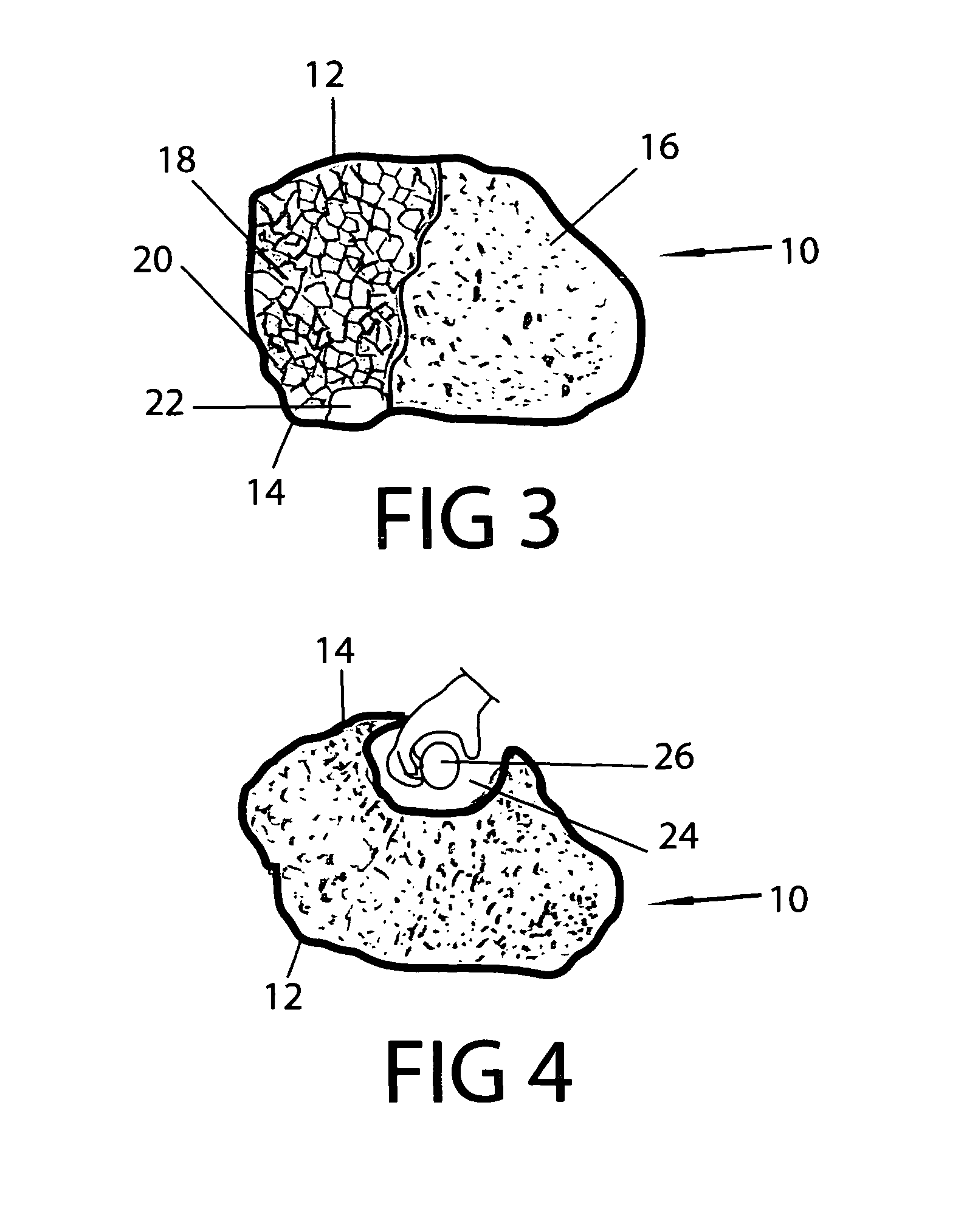Method of making an artificial hollow core boulder filled with non-biodegradable waste
- Summary
- Abstract
- Description
- Claims
- Application Information
AI Technical Summary
Benefits of technology
Problems solved by technology
Method used
Image
Examples
Embodiment Construction
[0030]FIG. 1 shows a preferred embodiment of the artificial hollow core boulder 10 of the present invention, which has a stucco surface 16. The boulder 10 is shown right side up, with the top of the boulder 12 at the top and the bottom of the boulder 14 on the bottom.
[0031]Illustrated in FIG. 2 a plastic bag 18 is loosely filled with crumpled newspaper, (not shown), and tied shut. The bag is not packed too tightly with the newspaper so as not to be too stiff. The filled bag 18 is wrapped with a layer of chicken wire 20. The bag is malleable and pressed at several places by hand (not shown) to have a boulder shape as described in Step 3 of FIG. 5.
[0032]A hole 22 is cut in the chicken wire 20, at the bottom 14 of the boulder 10 illustrated in FIG. 3. Stucco mix 16 is troweled over the chicken wire 20, except where the hole 22 is. As described in Step 6 of FIG. 5 the chicken wire 20 is lightly pulled away from the plastic so it is in the middle of the stucco layer. After the first laye...
PUM
 Login to View More
Login to View More Abstract
Description
Claims
Application Information
 Login to View More
Login to View More - R&D
- Intellectual Property
- Life Sciences
- Materials
- Tech Scout
- Unparalleled Data Quality
- Higher Quality Content
- 60% Fewer Hallucinations
Browse by: Latest US Patents, China's latest patents, Technical Efficacy Thesaurus, Application Domain, Technology Topic, Popular Technical Reports.
© 2025 PatSnap. All rights reserved.Legal|Privacy policy|Modern Slavery Act Transparency Statement|Sitemap|About US| Contact US: help@patsnap.com



